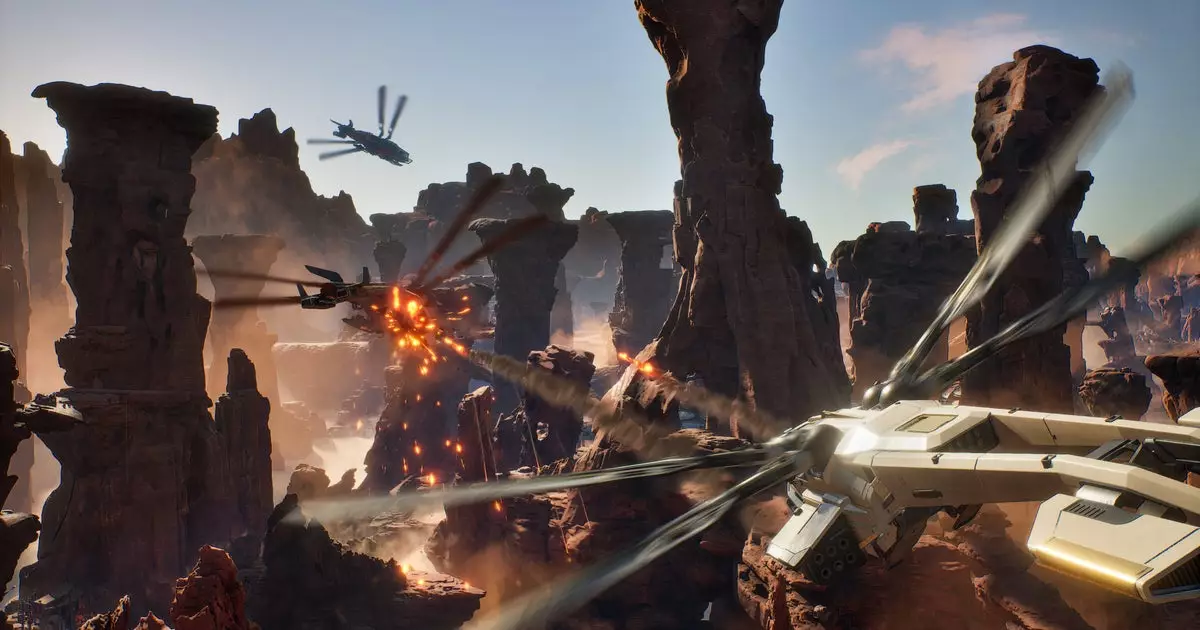The latest update for Dune: Awakening ushers in a transformative phase that could redefine the core experience for players. Funcom’s proactive approach to testing new features via the Steam client signals a clear intention: to empower players by refining mechanics that directly impact gameplay engagement and strategic choice. Notably, the debate surrounding resource management and environmental challenges is addressed head-on with significant modifications to how blood and water are handled. For years, these elements have been central to survival, yet cumbersome in practice. Now, with the introduction of one-button deposit and withdrawal options, players gain a streamlined method to sustain their bases and improve their efficiency—an upgrade that signals respect for player agency and convenience.
What’s particularly compelling about these changes is their emphasis on quality-of-life improvements that don’t trivialize the game’s complexity. By making resource transfer smoother, the developers acknowledge that survival should be challenging but fair. Removing tedious micromanagement allows players to focus on strategic decisions and exploration, rather than escaping the grind. Yet, the pain points, such as the inability to efficiently manage blood deposits, reflect an ongoing challenge: balancing complexity with accessibility. This move towards simplifying resource handling underscores an understanding that player engagement depends on reducing frustrations without sacrificing depth.
Environmental Hazards and Game Balance: A Fine-Tuned Approach
One of the more radical shifts involves alterations to the terrain and environmental threats—particularly sandstorms and sandworm interactions. Temporarily turning off sandstorms during initial testing phases suggests a calculated decision to prevent these natural events from discouraging exploration. By doing so, Funcom creates a safer testing environment, encouraging players to experiment with new mechanics and provide more meaningful feedback. This approach indicates a recognition that environmental hazards, while thematically fitting in the Dune universe, need to be balanced carefully against gameplay flow.
Simultaneously, the adjustments to sandworm behavior, especially their increased lethality, seem designed to inject a dose of realism and challenge into the game’s ecosystem. Making vehicles vulnerable during worm animations forces players to rethink their traversal strategies and highlights a shift from passive exploration to active risk management. It’s a bold move—potentially frustrating, but arguably necessary to elevate the game’s authenticity and difficulty curve. Such changes also serve as a reminder that game design in survival genres is a continuous balancing act, where environmental realism must be weighed against player enjoyment.
Combat and Vehicle Mechanics: Addressing Frustration and Friction
The update’s approach to ornithopter interactions exemplifies a nuanced understanding of player frustrations with griefing and disruptive behavior. By applying impulses to colliding ornithopters, Funcom aims to mitigate harassment tactics that can spoil multiplayer cooperation or multiplayer chaos. This tweak underscores a commitment to fair play, reducing the potential for disruptive behavior through mechanical design. Meanwhile, offering free access to a suite of elite ornithopters ensures that players are equipped to test these new physics without being hamstrung by resource limitations.
However, the decision not to allow blood deposits to be emptied with one click elicits criticism, as it signals inconsistency in quality-of-life features. While water management becomes more accessible, the system’s extension to blood remains unaddressed, showcasing a possible oversight in prioritization. This inconsistency indicates that while the developers are making strides toward player convenience, they still grapple with fully harmonizing these enhancements across all resource types—an area ripe for further refinement.
Economy and Player Progression: Cost Reductions and Tactical Opportunities
The economic adjustments—namely, reducing prices of alcohol and napalm—might seem trivial on the surface, but they hold strategic value for players who thrive in base-building and resource gathering. Lowered costs could incentivize players to experiment more freely with crafting, trading, or offensive tactics, thus enriching the sandbox experience. The interconnection between resource scarcity and weapon or weaponized substance accessibility underscores how small economic shifts can ripple across gameplay, fostering a more vibrant, player-driven economy.
Yet, these changes also suggest that the developers are carefully tuning the game’s risk-reward balance. Cheaper consumables may encourage more daring exploration or combat, but beware—an increased danger level from sandworms and environmental hazards may counteract this newfound affordability. This tension embodies the essence of survival: a constant dance between opportunity and threat. By adjusting prices while simultaneously escalating environmental dangers, Funcom shows an awareness that player progression isn’t just about gaining resources, but about managing risk effectively.
Overall Reflections: An Ongoing Journey Toward Player Satisfaction
The upcoming patch for Dune: Awakening exemplifies a development philosophy rooted in iterative improvement, transparency, and a keen focus on player feedback. While some mechanics seem to favor streamlining and convenience, others push the envelope on environmental challenge and strategic depth. The balancing act between realism, accessibility, and engagement is delicate—yet the developers’ willingness to experiment and communicate openly indicates a resolve to craft a survival experience that resonates deeply with its audience.
It’s evident that Funcom’s vision extends beyond mere content updates; it’s about evolving the game into a more cohesive, fair, and exciting universe. While there’s room for critique—particularly around inconsistencies in resource management features—the overall direction signals a game intent on listening, adjusting, and ultimately elevating its core experience. As the community eagerly anticipates the subsequent changes, one thing remains clear: Dune: Awakening is still very much in its formative stages, and these updates mark promising steps toward a game that truly puts player agency at the forefront.

